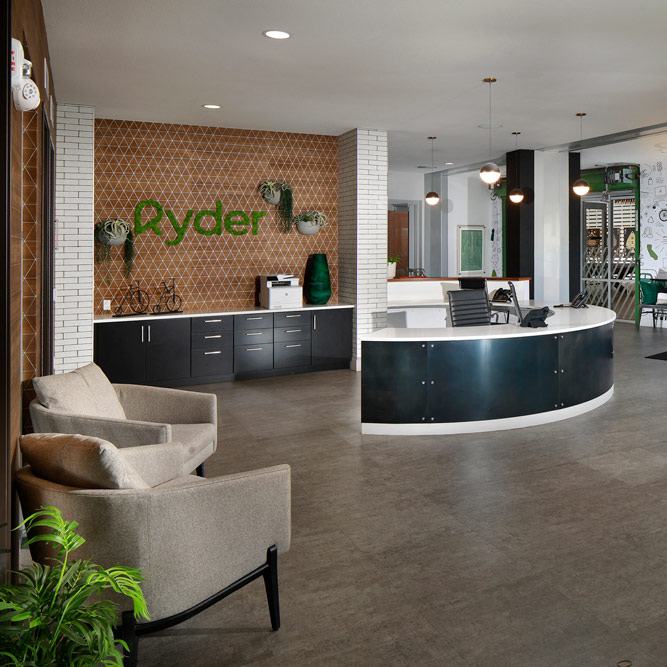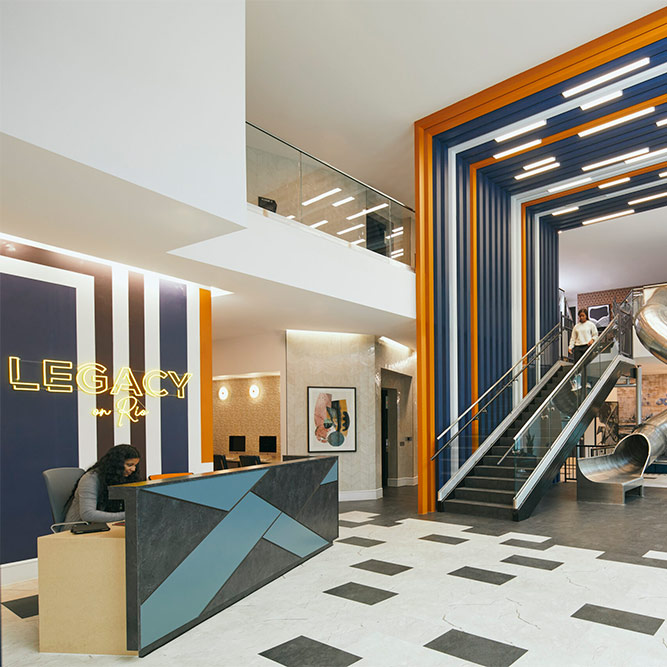Intentional Student Housing Design
Students appreciate good design and the benefits it brings to their education.
SouthPark Interiors bears the distinguished honor of having designed some of the most beloved student housing properties near renowned universities. That’s because we appreciate that good design is for everyone. It has the power to inspire and unite us and contribute to a higher quality of life.
For busy students pursuing higher education, the need for good design has never been greater. Students need spaces that make them feel energized yet safe. They value opportunities to socialize and connect with others while also having alone time to study and recharge. The places in which they live contribute to these preferences, and interior design holds the solution to all of the above.
In this article, we’ll reveal:
The Impact of Interior Design on Learning
The physical environment in which students live and learn can have a significant impact on their overall well-being, along with their capacity for learning. For instance, elements like natural lighting, comfortable furniture, and good ventilation can help students concentrate and feel energized and motivated.
There’s data to support this idea. For example, studies show that a well-designed space can improve student performance by up to 25%. For students living where they learn, well-designed spaces must not end at the classroom but also include their dormitories or apartments.
Key Principles of Educational Interior Design
Having designed countless student housing communities across the country, we apply our proven design process, which supports learning, engagement, safety, and inspiration.
We give special consideration to the following:
- Ergonomics and comfort: Comfortable seating and desk arrangements promote greater productivity, focus, and collaboration.
- Color and aesthetics: Color choices and aesthetics influence mood and focus. Understanding the power of color psychology can also help property owners attract and retain student tenants.
- Flexibility and adaptability: Students needs evolve throughout the day, and they demand a lot from their living spaces. Including versatile areas can accommodate different learning activities, from solo studies to group projects, club meetings and more.
- Technology integration: Modern education requires modern technology, such as high-speed internet, Bluetooth devices, and charging ports, to name a few. Technology enhances the functionality of a space, making it more appealing to students because they can address multiple needs in one place.
The Ryder
Designed in 2021, the Ryder serves as home to more than 700 students. We designed this space to reflect a fresh California vibe, blending nature-inspired colors with rich wood textures and plenty of bright neutral space. Community is at the heart of this facility, with common spaces indoors, outdoors, and in between. The final product boasts a calm, laid-back atmosphere with fun sprinkled throughout in the form of accent walls, modular furniture, the on-site gym and bicycle storage, and of course the custom mural graphic wall.
Legacy on Rio
A drastic flip from the Ryder, Legacy on Rio in Texas boasts more of an industrial vibe with its shipping container-esque exterior and sharp lines throughout the interior. To make the common areas stand out, we focused on unexpected color schemes, patterns, and textures to bring out its unique amenities. Each space has its own theme, with no shape, line, curve, or color off limits. However, each design circles back to the next for a consistent theme throughout.
Adding Collaborative Spaces and Common Areas
Education isn’t always a solo journey. Even during individual studies, students often seek the help and collaboration of others to fill in knowledge gaps and make learning more engaging.
Collaborative spaces provide a platform for students to work together, share ideas, and problem-solve collectively. They also help create a sense of belonging among students, especially in college settings where there’s a large population of international students.
SouthPark Interiors has extensive experience in transforming common areas to facilitate group work, discussions, and creativity. When given access to well-designed collaborative spaces that foster inclusivity and collaboration among peers, barriers are broken down. Students become more willing to contribute their ideas and engage in meaningful dialogue.
The Role of Community Input
No student housing design is fully successful without input from the student community. Students and staff who will be relying on the spaces being created should help inform the design process.
Some ways you can gather feedback and input include:
- Sending surveys to students living on and off campus
- Taking live street polls
- Creating an SMS text program for input
As evidenced by our two strikingly different communities, Ryder and Legacy on Rio, it’s clear that student housing doesn’t require a one-size-fits-all approach. It’s essential that designers consider what makes a student population unique and how to best help them thrive.
Creating Stronger Student Housing Communities
Designing inspiring learning environments isn’t just about being known as the “cool place to live.” It’s about nurturing the whole student, from physical needs like housing to socialization and educational well-being. Interior design can achieve these and more through thoughtful color choices, ergonomic furniture, flexibility, and technology that come together to optimize the living and learning experiences.
At SouthPark Interiors, we push the bounds of creativity in student housing to create dynamic environments that will help students thrive. Contact us today to learn more about our commercial interior design services and how you can inspire today’s generation of learners.


